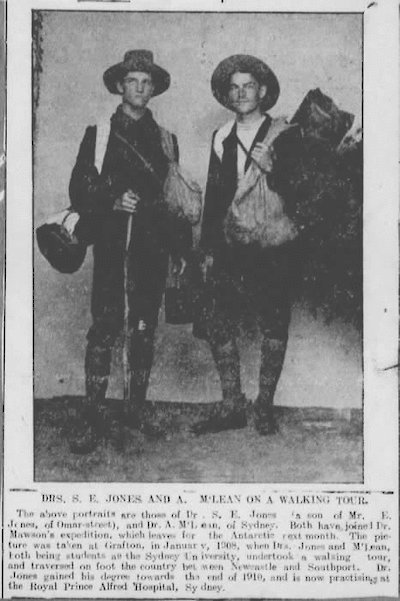Medical men
It was necessary that the AAE’s Antarctic bases each have a medical officer. Given the extensive biological training involved in medicine, and Mawson’s insatiable thirst for science in the AAE, it was almost inevitable that medical people would be expected to take on some scientific work.
Two of the expedition’s surgeons — Archibald McLean and Sydney Jones — were friends and fellow graduates of the University of Sydney. Jones was selected on the recommendation of McLean, who had been appointed as the expedition’s chief medical officer.
McLean’s surgical competence was matched by his capacity for ideas, scientific and otherwise. He suggested to Mawson that expeditioners receive heliograph training, and undertook to study the effect of Antarctic work on urinary secretion and composition, to gain practical experience in canine diseases, and to investigate a program of microbiological research. Jones also offered to pursue bacteriology, in which he and McLean had gained proficiency during their hospital training.
When Leslie Whetter, a 29 year old surgeon from New Zealand, applied, his mother cabled to Mawson ‘Do not accept Dr Whetter subject rheumatism; just recovered bronchitis; only son.’ Mawson appointed him, but was disappointed at his lack of engagement with the work of the expedition group. Mawson had originally planned for Whetter to have his own practice at the third planned base, but with the decision to amalgamate two groups he ended up working under McLean at Cape Denison.

